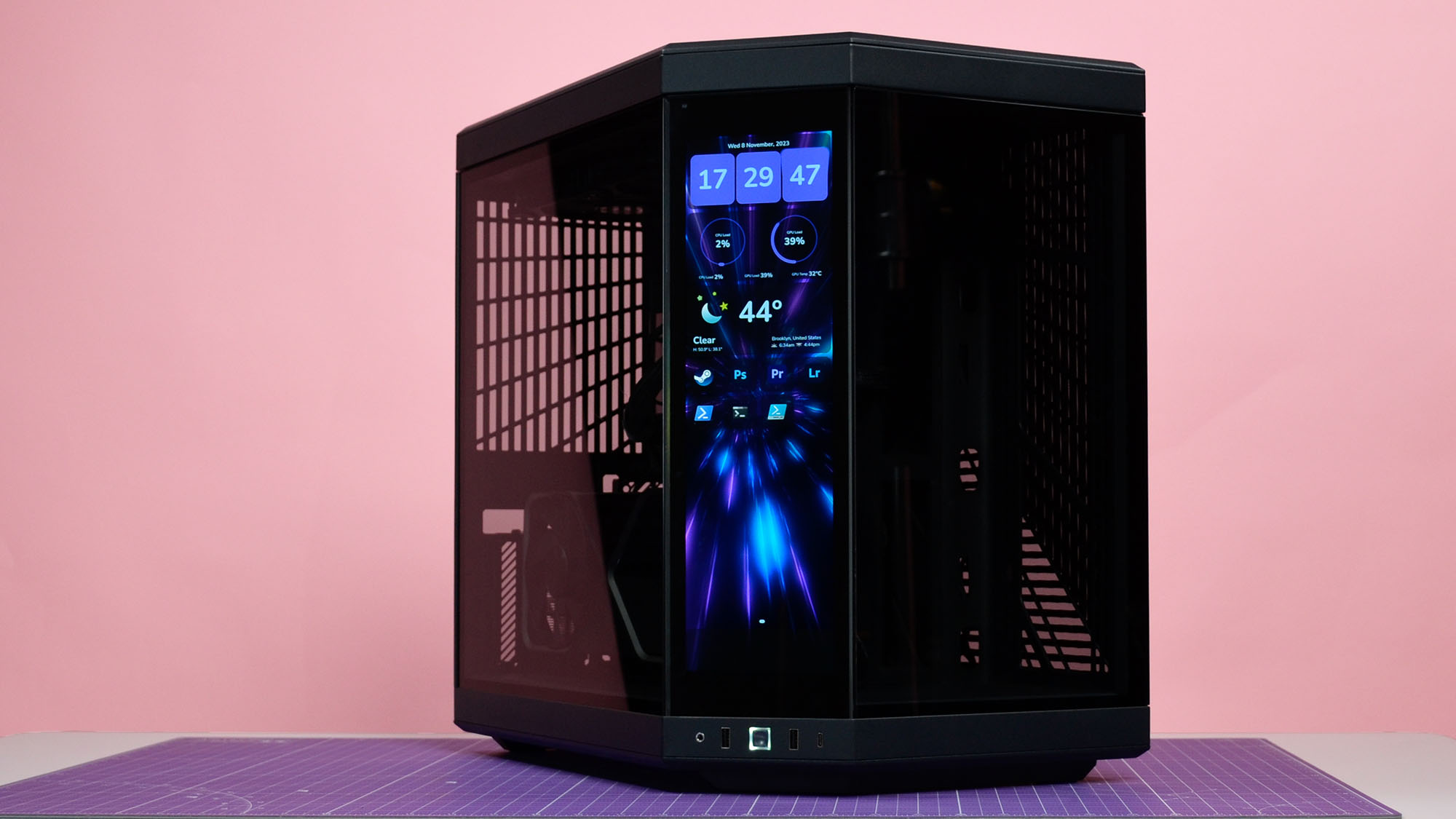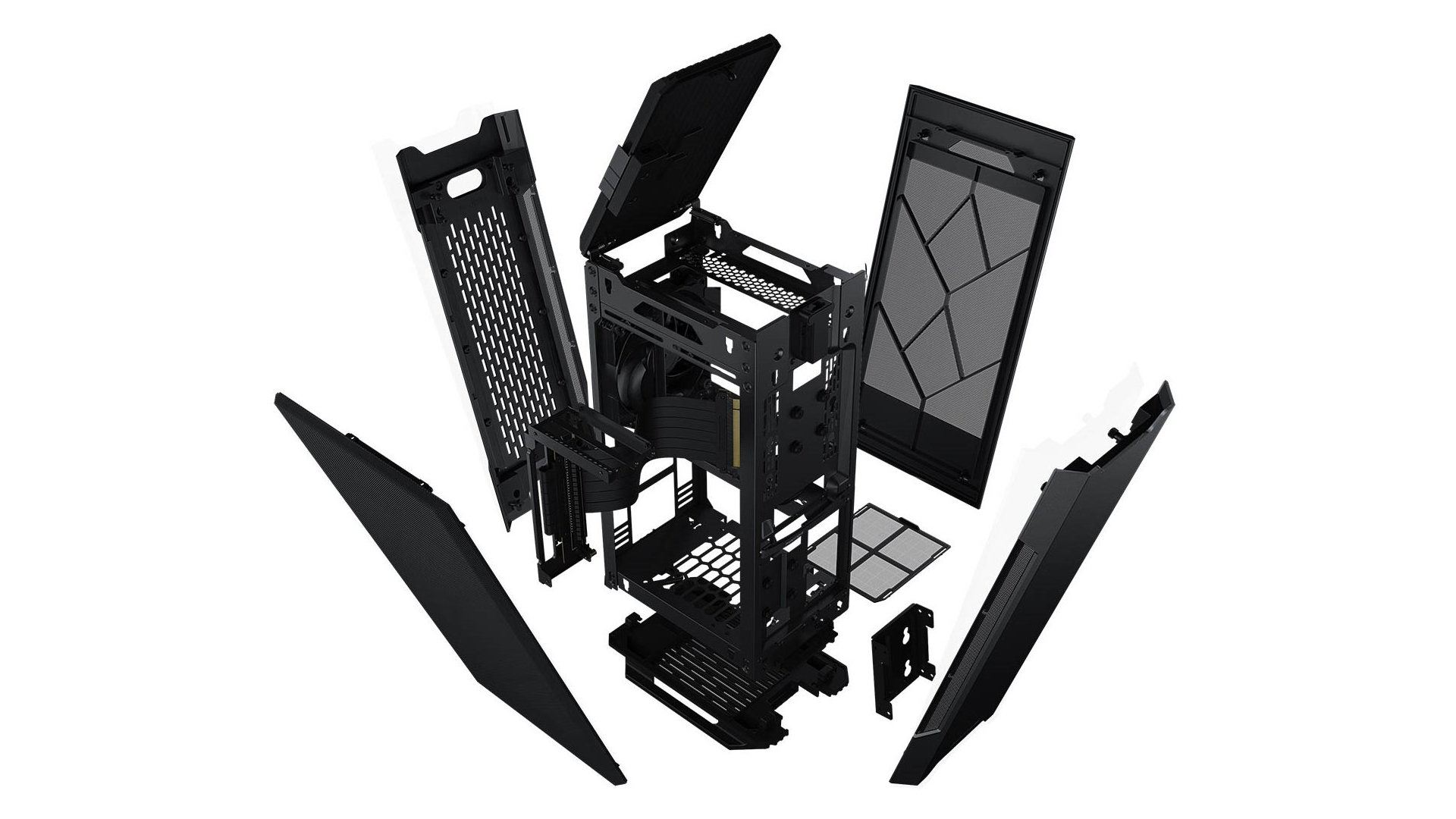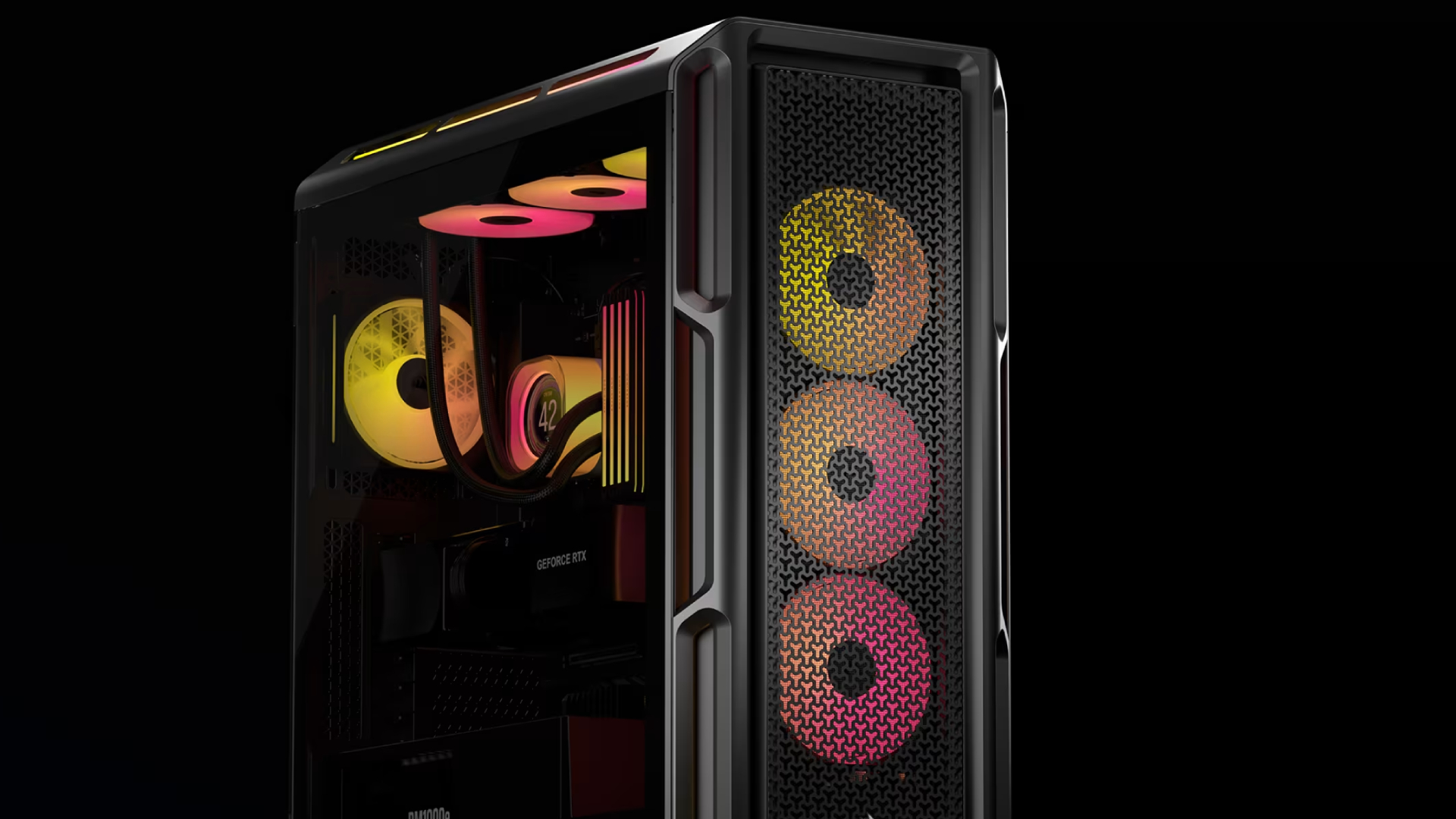PC case sizes explained: all form factors available in 2025
Which computer case is right for you?

Deciding on the right PC case is one of the most important factors of any build, as it will define the form factor for use and the building experience. This could mean opting for a consolized small form factor rig or going all out with the biggest chassis available for maximum airflow and cooling potential.
Not all PC cases are made equally, as there are distinct sizes by category that can even vary by manufacturer. As such, knowing where to start and what to consider can be challenging. The best PC cases are not created equally, whether that's by manufacturer or in the varying form factors available. That's why we're outlining the PC case measurements and comparing them by size so you're fully informed.
We want you to have the best gaming PC that you can afford to build, and choosing the right PC case can make all the difference, especially if you're also considering utilizing one of the best motherboards, best processors, best CPU coolers, and best graphics cards.
PC case measurements explained
Generally speaking, there are four different PC case sizes available. From smallest to largest, these are Mini-ITX/MicroATX (Small Form Factor), Mini Tower, Mid-Tower, and Full Tower. The different sizes correspond to the varying motherboards, as you'll need a compatible board that can be installed inside the chassis, with enough room to build and clearance for components, such as your GPU, CPU cooler, as well as the case fans.
PC case measurements can vary depending on the manufacturer, however, there's a rough size guide to keep in mind for all five major chassis available in 2025. Mini-ITX and MicroATX (or SFF) cases include the NZXT H210 and Lian Li Q58W3 for the former and the Corsair 2500X and Asus AP201 Prime for the latter. Taking these popular options as an average, Mini-ITX cases typically measure around 14 x 8 x 14 inches (HxWxD) and can weigh in around 14 lbs. MicroATX cases can be larger at 14 x 12 x 18 inches (depending on the manufacturer), with more clearance inside.
Mini Towers traditionally have more vertical clearance and depth when compared to Small Form Factor builds, such as with the Fractal Design Meshify 2 and the NZXT H5 Flow. On average, these PC cases measure 16 x 8 x 15 (HxWxD). While a little bigger and heavier, Mini Towers can be a good middle ground for those PC gamers wanting a smaller rig without the cramped building experience and airflow concerns. All three of these chassis types would be ideal for a home entertainment or living room setup just as well as on a desk.
Mid-Towers are the most widely used PC cases available and have the most options on the market from a myriad of different hardware manufacturers. As a result, there's no one-size-fits-all solution when it comes to their exact measurements, however, we can take an average based upon many popular options available right now. These include the likes of the Fractal Design North, NZXT H7 Flow, and Hyte Y70 Touch. Sizes range around the 18 x 12 x 18 inches mark (HxWxD), although some manufacturers can go a little larger or smaller than this. While (traditionally) a little wider, the main advantage is extra height and depth compared to Mini Towers.
Lastly, Full Towers are the largest PC cases by size and offer the most versatile building experience for bigger graphics cards and cooling solutions, such as custom loops. They can be among the most expensive (and heaviest) chassis on the market depending on the manufacturer, with popular examples including the Cooler Master Cosmos Infinity, Lian Li Lancool III, and Asus ROG Hyperion GR701. On average, these large cases can measure up to (or beyond) 25 x 10 x 25 (HxWxD) and weigh as much as 40 lbs.

SFF cases: Strengths and Weaknesses
We've outlined the major differences in PC cases and their sizes, but now it's time to go over the varying use cases between them. Small Form Factor (SFF) builds have risen to prominence in recent years due to their compact design and emphasis on only the essentials when it comes to what they can do. These machines can typically either thrive under a television as part of a home entertainment system, Xbox Series X / PS5 replacement, or as a low-profile workstation, in the same vein as Apple's Mac mini.
However, the versatile use cases here already have a discrepancy in PC case sizes and their corresponding components. Depending on how small the chassis is, you may need a Mini-ITX motherboard instead of a MicroATX version, which can be far more expensive (and limiting) with its 6.7-inch board versus the 9.6-inch of the latter. That's ultimately going to be one of the biggest considerations when building an SFF machine, as the super sleek console (and cube) chassis on the market will need specific hardware.
Another associated cost is components such as specifically designed power supplies, but also CPU coolers and case fans made with smaller PC cases in mind. After all, some of the best PSUs will not fit into an SFF chassis, owing to them being (primarily) made with Mid Towers and Full Towers in mind first and foremost.
This includes the premium on power bricks, as seen with the likes of the Cooler Master V750 SFX ($170) compared to the traditionally sized Cooler Master MWE Gold 750 V3 ($99.99) or the Cooler Master XG750 Plus Platinum ARGB ($99.99) from the same manufacturer. That's a markup of 70%, which is roughly in line with the price increase you can expect from a MicroATX motherboard to a Mini-ITX one (depending on the manufacturer).
There's no shortage of low-profile CPU coolers for SFF machines, but they're not going to be the powerhouses needed for leading processors. Popular examples include the Noctua NH-L9i, Thermalright AXP90 X53, and the Be Quiet Pure Rock LP; they're inaffordable and will suffice for workstation and light gaming use, but will not be appropriate for midrange or higher-end processors. SFF water coolers exist (in single and dual fan configurations) like the Corsair H55 RGB, Be Quiet Loop 2, and the Fractal Lumen S24 v2, but you'll want to choose a lower TDP CPU and a case with airflow to spare for anything too extensive.
Your choice of graphics card will also need to be considered with an SFF gaming PC. While it's true that the RTX 5090 and RTX 5080 Founders Edition models can fit into a mini-ITX chassis (being two-slot), the same cannot be said for many of Nvidia's partners, with some alternatives being triple-slot and even quad-slot, depending on the cooler. This will also be dependent on the size of the small form factor chassis as well, as there's no set size for anything smaller than a quantifiable mini tower.
It's not only the width of the GPUs but also the lengths to keep in mind. Yes, there's the need for clearance on the motherboard, so it doesn't block anything else, but also the simple act of getting it in the case in the first place. Some Mid-Towers can even struggle with certain models, depending on where the coolers are installed. We recommend checking the dimensions of the GPUs and physically measuring your PC case's space before you buy anything to avoid disappointment.
SFF machines also need more maintenance than their Mid Tower and Full Tower equivilents, owing to the limited airflow. As a result, they can become dustier faster, which can impede performance over time. Many SFF PC cases feature dedicated mesh panels which can be removed to be de-dusted, but you may need to keep a can of compressed air nearby. Similarly, as many of these chassis do not feature view windows, it can be troublesome to know bad things may have built up until the system starts showing signs of slowdown.

Mini, Mid, and Full Tower: Which is right for me?
Things become easier to discern between Mini Towers, Mid-Towers, and Full Towers as they're all going to support the ATX platform, whether that's with a MicroATX, ATX, or E-ATX motherboard. It's the fiberglass itself that will be a deciding factor in what you go for, as a smaller PC case may not have support for a full-sized ATX or E-ATX motherboard to be installed into it. However, you're going to have far more options when compared to a Mini-ITX build, from not only the mobo but also the components you can install onto it.
While Mini Towers can more easily accommodate larger graphics cards, CPU coolers, additional case fans, and traditionally sized PSUs over SFF machines, they have their limits when compared to Mid-Towers. As Mid-Towers are the most used (and most commonly available) PC cases on the market, you're going to find far more versatility in options from more manufacturers producing varying styles to suit (almost) any preferences. It will also mean enhanced airflow, so a full-sized 360mm radiator or a custom loop cooling solution will be an easier thing to accommodate here.
However, for the maximum amount of space to build in and components to install, a Full Tower is going to be the only solution for some people, particularly if you're thinking of using an E-ATX motherboard. The extra space means you can go for a more advanced custom cooling loop while using the largest graphics cards you can find and all the case fans you could ever need. Additionally, you could forgo a loop and use a large AIO for the CPU and a dedicated water block for the GPU instead.
There's no straight answer for which PC case is better or worse than another one as it comes down to use case above all else. We've outlined the sizes and use cases so that you can make an informed decision when it comes to your next build, armed with the knowledge of which components will feature in it, too.
How do I find PC case measurements?
While we've outlined the average sizes of PC cases, you can find the specific information of the dimensions available on the manufacturer's respective website which is usually found under the technicial specifications of the product. Some retailers, such as Newegg and Best Buy, may also have this information listed under the product page.
Where can I find a PC case size chart?
Many PC case manufacturers will have comparison features available on their website, especially if the chassis are from the same line. While you're not always guaranteed a dedicated infographic, you can get a rough idea of the respective sizing this way.
Sign up for breaking news, reviews, opinion, top tech deals, and more.

Formerly TechRadar Gaming's Hardware Editor, Aleksha McLoughlin is now a freelance writer and editor specializing in computing tech, video games, and E-commerce. As well as her many contributions to this site, you'll also find her work available on sister sites such as PC Gamer, GamesRadar, and Android Central. Additionally, more of her bylines can be found on Trusted Reviews, Dexerto, Expert Reviews, Techopedia, PC Guide, VideoGamer, and more.
You must confirm your public display name before commenting
Please logout and then login again, you will then be prompted to enter your display name.